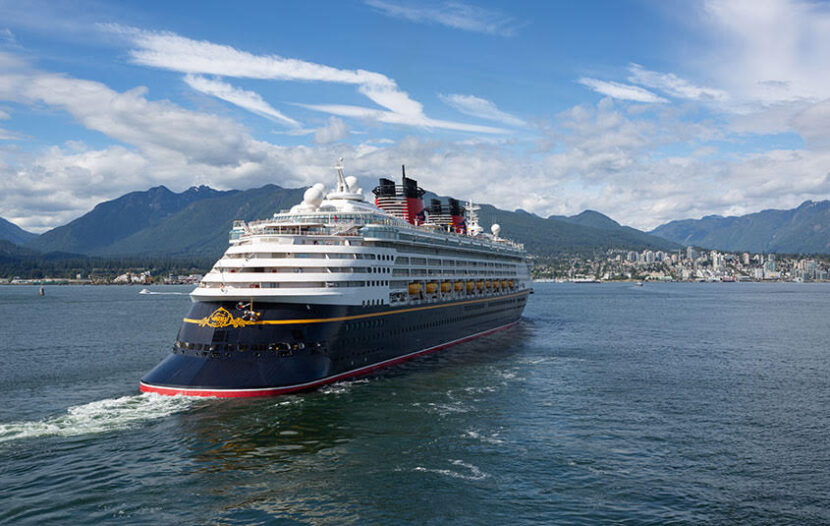OTTAWA — More support is coming for the cruise industry courtesy of the Tourism Industry Association of Canada (TIAC).
The organization has launched a brand new National Cruise Committee comprised of TIAC members, Canadian organizations that operate in the global cruise industry and represent all regions of Canada impacted by cruise – Atlantic Canada, Quebec, Ontario, British Columbia and Northern Canada.
The group will advocate for the cruise industry to be treated no different from other travel sectors in Canada, act in an advisory capacity to identify key issues and provide regular updates and recommendations to TIAC’s Recovery Committee. It hopes to send a clear message that the sector is ready to safely welcome ships back and that it has confidence in cruise line partners that their restart will follow the necessary protocols to keep guests, crew and communities safe.
Canada’s cruise ship ban, first implemented in March 2020 in response to the COVID-19 pandemic, has been extended until Feb. 28, 2022. It essentially bans cruise vessels carrying 100 or more people from operating in Canadian waters. The cruise sector is responsible for 30,000 direct jobs in Canada.
“We are a part of the tourism industry that is effectively in ‘lockdown’ until Spring 2022 due to the federal ban on cruise until Feb. 28, 2022. As other parts of the country and industry may start to see some recovery in summer 2021, we won’t have the ability to make any movement. This committee will allow for coordinated advocacy for this sector,” said Danielle Timmons, TIAC National Cruise Committee Chair.
“This is a pivotal time to be launching. The committee is in full support of TIAC’s recent campaign launch on opening the U.S. Canada border. We hope to bring awareness education and support for the cruise supply chain businesses that are still in lockdown,” added Timmons.
With a stakeholder list already comprised of over 300 names, the committee has many supporters. The Canadian Cruise Supply Chain of companies contributes $4.3 billion to Canada’s economy annually. With the Alaska Tourism Restoration Act (ATRA) recently signed into law, and cruising resuming safely in other regions of the world, the Committee says it is imperative that Canada gives clarity and assurance to both American cruise partners, and the millions of Canadians whose livelihoods depend on cruise.
Canadian and B.C. officials can do more to address an “urgent” situation
Meanwhile, during a news conference on June 11, British Columbia’s Premier John Horgan said legislation proposed in the United States that would scrap a long-standing requirement for American cruise ships to dock at a foreign port between domestic stops doesn’t change the fact people want to visit B.C.
The “machinations of U.S. politics” on a given day don’t change the draw for people to travel up B.C.’s coast, he said adding he doesn’t believe there’s anything the B.C. government can do about decisions made in the U.S. Senate.
Utah Sen. Mike Lee has introduced three bills to repeal and reform the 135-year-old U.S. Passenger Vessel Services Act, saying in a statement this week that it’s an “outdated, protectionist law” that benefits Canada and harms American jobs.
And last month, President Biden signed the Alaska Tourism Restoration Act, allowing ships to temporarily bypass B.C. ports until Canada’s cruise ship ban is lifted next February.
Horgan said he spoke on Thursday with Alaska Sen. Lisa Murkowski, who was behind the legislation, and she assured him the law only applied until Canada lifts its restrictions, while Lee’s proposed changes would not be temporary.
Until the pandemic hit, about 1.7 million cruise passengers visit Vancouver and Victoria every year, he said.
Greater Victoria Harbour Authority CEO Ian Robertson said B.C. can’t take for granted that U.S. cruise ship passengers will always want to visit the province.
“Absolutely, that’s the case with many other tours and many other parts of the tourism economy, but cruise is very, very different,” he said in an interview.
Some passengers sailing from Seattle to Alaska don’t even know they’re set to stop in Victoria until they get their itineraries, he added.
Robertson said Canadian and B.C. officials can do more to address what he called an urgent situation facing an industry that contributes significantly to the economy.
“I know that talking to cruise line officials, you know, they feel that perhaps their business is not wanted in Canada,” he said. “With the industry bringing $2.7 billion to British Columbia, you can’t take that lightly.”
Robertson said he’s written a letter to Prime Minister Justin Trudeau calling on Ottawa to rescind the ban on cruise ships this fall and announce the change immediately to send a positive signal to the industry that they will be welcome.
He’d like Horgan to publicly support that call for reopening Canadian waters and wants to see the provincial government work closely with the cruise ship industry on efforts to build back Canada’s reputation as a cruise destination, Robertson said.
Asked about Lee’s proposal, Transport Canada said in a statement the government understands that the cruise ship industry has been hard hit by the economic impact of the COVID-19 pandemic and it has been working with public health officials, provinces and territories, industry and other stakeholders to reassess measures.
With file from The Canadian Press

